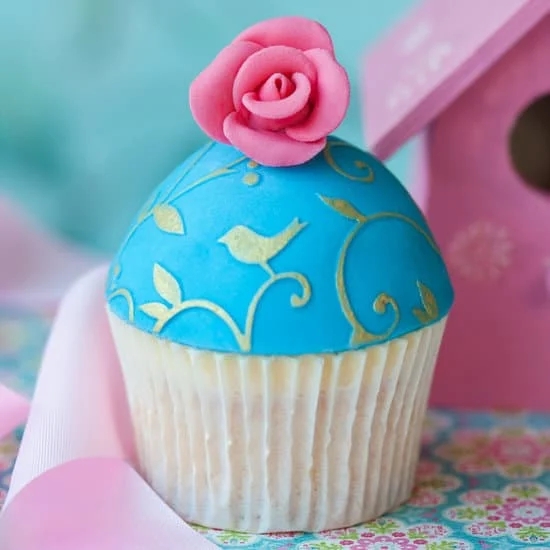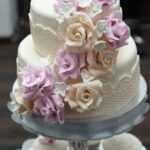Meringue is a versatile and airy confection that plays a crucial role in cake decorating, adding texture, flavor, and visual appeal to desserts. Learning how to make meringue for cake decorating is essential for anyone looking to elevate their baking skills and create stunning edible works of art.
There are three main types of meringue – French, Italian, and Swiss – each with its own unique characteristics and uses in the world of pastry. Understanding the differences between these varieties is key to mastering the art of meringue-making and achieving the desired results in your cakes and desserts.
In this comprehensive guide, we will delve into the nuances of working with meringue, from the basic recipe ratios to essential equipment needed for success. Whether you’re a seasoned baker or a novice in the kitchen, mastering the techniques outlined in this article will empower you to create beautifully decorated cakes that are sure to impress any crowd.
Types of Meringue
Meringue is a fundamental element in cake decorating, adding a light and airy texture, as well as a touch of sweetness to desserts. There are three main types of meringue commonly used in baking: French, Italian, and Swiss. Each type has its own unique characteristics and methods of preparation that can affect the final outcome of your cake decorations.
- French Meringue: French meringue is the most basic and commonly used type. It involves whisking together egg whites and sugar until stiff peaks form. This type of meringue is simple to make but requires careful attention to avoid overbeating, which can result in a grainy texture.
- Italian Meringue: Italian meringue is made by boiling sugar to a specific temperature before slowly pouring it into whipped egg whites. This method creates a more stable meringue with a glossy finish, perfect for intricate cake decorations that need to hold their shape.
- Swiss Meringue: Swiss meringue is created by gently heating egg whites and sugar over a double boiler until the sugar dissolves, then whipping it into stiff peaks. This type of meringue has a velvety texture and is often preferred for icing cakes or piping delicate designs.
Whether you choose French, Italian, or Swiss meringue for your cake decorating projects will depend on the desired texture, stability, and appearance you wish to achieve. Experimenting with different types of meringues can help you discover which one works best for your specific needs and preferences when it comes to decorating cakes with beautiful designs.
Equipment Needed for Making Meringue
Meringue is a versatile element in cake decorating that can elevate the appearance and taste of your baked creations. To successfully make meringue for cake decorating, it is essential to have the right equipment on hand. The key tools you will need include mixing bowls, whisks, and thermometers.
Mixing bowls are essential for combining the egg whites and sugar when making meringue. It is important to use clean and dry mixing bowls to ensure the meringue whips up properly. Whisks come in handy for beating the egg whites until they reach stiff peaks, which is crucial for creating a stable meringue mixture that holds its shape when piped onto cakes.
A thermometer is another important tool for making meringue, especially Swiss meringue which involves heating the egg whites and sugar over a double boiler. A candy thermometer can help you monitor the temperature accurately to achieve the desired consistency without cooking the eggs. Having these basic equipment ready will set you up for success in making meringue for cake decorating.
The Basic Meringue Recipe
Understanding the Importance of Proper Ratios
Achieving the perfect meringue for cake decorating relies heavily on having the right ratios of sugar to egg whites. This balance is crucial in determining the texture, stability, and sweetness of the meringue. Typically, a basic meringue recipe calls for a certain amount of granulated sugar for every egg white used. Understanding this ratio is key to creating a successful meringue that will hold its shape when piped onto cakes or desserts.
The Standard Ratio for Basic Meringue
The most common ratio for making a basic meringue is 1/4 cup of granulated sugar for every egg white used. This ratio ensures that the meringue will have enough sweetness while still maintaining its structure during baking or torching. It’s important to gradually add the sugar while whipping the egg whites to ensure that it fully dissolves and incorporates into the mixture. This gradual addition helps prevent graininess in the final product.
Adjusting Ratios for Different Meringue Types
Different types of meringue, such as French, Italian, and Swiss, may require slight adjustments in the sugar to egg white ratio. For example, Italian meringue often calls for making a hot sugar syrup that is poured into whipped egg whites while Swiss meringue involves heating the egg whites and sugar over a double boiler before whipping.
Understanding these variations in techniques and ratios can help you choose the right type of meringue for your specific cake decorating needs. Experimenting with different ratios can also help you customize the sweetness and texture of your meringue based on personal preference or recipe requirements.
By mastering the proper ratios of sugar to egg whites in your meringue recipe, you can elevate your cake decorating skills to new heights. Whether you prefer a light and airy French meringue or a stable and glossy Italian meringue, understanding these fundamentals will set you on the path to creating stunning and delicious creations that are sure to impress. Experiment with different ratios, techniques, and flavorings to find what works best for your unique cake decorating projects.
Tips and Tricks for Achieving the Perfect Meringue Consistency
Meringue is a versatile frosting that can elevate the look and taste of any cake. However, achieving the perfect meringue consistency can be a challenge for many bakers. To master this essential skill for cake decorating, here are some tips and tricks to help you create the perfect meringue every time.
Use Room Temperature Ingredients
One of the key factors in achieving the perfect meringue consistency is using room temperature ingredients. Make sure your egg whites are at room temperature before starting the process. Cold egg whites are more difficult to whip up into a stable foam, which can affect the texture of your meringue.
Avoid Any Trace of Grease
It’s crucial to ensure that all equipment used for making meringue is completely grease-free. Even a tiny trace of grease on your mixing bowl or whisk can prevent the egg whites from reaching their full volume when whipped. To avoid this issue, wipe down all utensils with vinegar or lemon juice before using them.
Gradually Add Sugar
When adding sugar to your meringue mixture, do so gradually. Adding sugar too quickly can cause the meringue to deflate or become grainy. For the best results, incorporate sugar slowly once soft peaks have formed in the egg whites. This gradual process will help stabilize the foam and create a smooth, glossy meringue perfect for decorating cakes.
By following these tips and tricks, you’ll be able to achieve the perfect meringue consistency for your cake decorating projects every time. Experiment with different flavors and colors to create unique designs on your cakes that will delight both the eyes and taste buds of those who indulge in your creations. Mastering how to make meringue for cake decorating will open up a world of possibilities for creating stunning desserts that are sure to impress any audience.
Flavoring Meringue
When incorporating flavors into your meringue, it’s essential to do so gradually to avoid compromising the texture of the mixture. Start by adding small amounts of extract or zest while mixing the meringue until you achieve your desired taste intensity. For coloring meringue, gel food coloring is recommended over liquid ones as it won’t alter the consistency of the mixture. You can mix different colors for a marbled effect or use vibrant hues for eye-catching decorations.
For those looking to take their cake decorating skills up a notch, consider using flavored sugars like lavender-infused sugar or citrus zest sugar in place of regular granulated sugar in your meringue recipe. This simple swap can add an extra layer of flavor complexity to your desserts. Remember that experimenting with different flavor combinations is part of the fun when it comes to making meringue for cake decorating projects.
| Flavoring Tips | Details |
|---|---|
| Start Gradually | Add extracts or zests slowly while mixing |
| Use Gel Food Coloring | Avoid altering consistency with vibrant hues |
| Try Flavored Sugars | Experiment with lavender or citrus-infused sugars |
Techniques for Piping Meringue Onto Cakes
When it comes to cake decorating, one of the most versatile and visually appealing elements you can use is meringue. Meringue can be piped onto cakes in various ways to create intricate designs and textures that elevate the look of your desserts.
Whether you are going for a simple and elegant rosette design, a whimsical swirl pattern, or sharp peaks for a dramatic effect, mastering the art of piping meringue can truly take your cake decorating skills to the next level.
To successfully pipe meringue onto cakes, you will need some essential tools such as piping bags, tips, and couplers. Here is a list of equipment you will need:
– Piping bags: Disposable or reusable piping bags are essential for neatly transferring the meringue onto your cakes.
– Piping tips: Different tips create various shapes and designs when piping meringue. Popular options include star tips for rosettes and round tips for swirls.
– Couplers: These handy tools allow you to change out different piping tips without having to change the entire bag of meringue.
Once you have gathered all your equipment, it’s time to start practicing different techniques for piping meringue onto cakes. Here are some common techniques that you can try:
1. Rosettes: To create beautiful rosettes on top of your cakes, use a star tip and apply even pressure while piping in a circular motion from the center outward.
2. Swirls: For a more fluid and whimsical look, swirl the meringue in a gentle wave motion while gradually lifting the tip upwards.
3. Peaks: To achieve sharp peaks on your cakes, hold the piping bag at a 90-degree angle above the cake surface and apply steady pressure while pulling upward to create pointed peaks.
With these techniques in mind and some practice, you’ll soon be able to confidently pipe meringue onto cakes like a pro. Experiment with different designs, colors, and flavors to add your own personal touch to your cake decorating projects using this keyword: how to make meringue for cake decorating.
Troubleshooting Common Meringue Problems
When it comes to making meringue for cake decorating, there are a few common problems that can arise during the process. Understanding how to identify and troubleshoot these issues is essential in ensuring your meringue turns out perfect every time. Some of the most typical meringue problems include weeping, overbeating, and deflating.
“Weeping” in meringue refers to beads of moisture that form on the surface of the meringue after it has been baked or piped onto a cake. This issue is often caused by undercooking the meringue or adding sugar too quickly during the mixing process. To prevent weeping, make sure your sugar is fully dissolved into the egg whites before baking or piping your meringue.
Overbeating is another common problem when making meringue. This occurs when the egg whites are whipped for too long, causing them to become dry and stiff. Overbeaten egg whites can result in a grainy or lumpy texture in the final meringue. To avoid overbeating, be sure to stop mixing once stiff peaks have formed and do not continue whisking beyond that point.
Deflating meringue happens when air bubbles are lost during the mixing or folding process, resulting in a flat and dense final product. This can occur if you fold in additional ingredients too roughly or if there are any traces of grease or oil in your equipment.
To prevent deflating, gently fold in any flavorings or colors and make sure all utensils are clean and dry before beginning the meringue-making process. By understanding how to troubleshoot these common meringue problems, you’ll be better equipped to create beautiful and delicious decorations for your cakes.
Conclusion
In conclusion, learning how to make meringue for cake decorating can truly elevate your baking skills and bring a touch of elegance to your creations. By mastering the different types of meringue – French, Italian, and Swiss – you open up a world of possibilities for decorating cakes, cupcakes, pies, and more. Understanding the importance of proper ratios of sugar to egg whites is key to achieving that perfect glossy texture and stiff peaks that are essential for intricate designs.
Equipping yourself with the right tools such as mixing bowls, whisks, and thermometers will help simplify the process and ensure consistent results. Experimenting with flavoring meringue by adding extracts, zests, and colors allows for endless customization to match the theme or taste preferences of your desserts. Whether you prefer piping rosettes, swirls, or peaks onto your treats, practicing different techniques will enhance your decorating skills and artistic flair.
So why not challenge yourself to try making meringue for your next cake decorating project? With the tips and tricks provided in this guide and a bit of practice, you’ll soon be creating stunning edible works of art that not only look beautiful but taste delicious too. Don’t be afraid to get creative and express your unique style through the art of meringue decoration – it’s a fun and rewarding skill to master in the world of baking.
Frequently Asked Questions
What Is the Trick to Making Meringue?
The trick to making meringue is to ensure that your mixing bowl and beaters are clean and free of any grease. Also, adding sugar gradually while beating the egg whites until stiff peaks form is crucial for a stable meringue.
Can You Pipe Meringue on a Cake?
Yes, you can pipe meringue on a cake to create decorative swirls or peaks. Make sure your meringue is stiff enough to hold its shape when piped onto the cake. Use a piping bag with a decorative tip for best results.
How Do You Keep Meringues Fresh on a Cake?
To keep meringues fresh on a cake, it’s important to store the cake in a cool, dry place away from direct sunlight and moisture. Avoid placing the cake in the fridge as this can cause the meringue to become soft and lose its crunchiness.
Covering the cake with plastic wrap or a cake dome can help preserve the freshness of the meringues on top of the cake.

Welcome to our cake decorating blog! My name is Destiny Flores, and I am the proud owner of a cake decorating business named Cake Karma. Our mission is to provide delicious, beautiful cakes for all occasions. We specialize in creating custom cakes that are tailored specifically to each customer’s individual needs and tastes.





